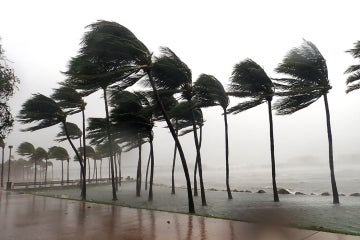
At the TIFF Kids' Film Festival and Industry Conference
Published: April 11, 2014
The Toronto International Film Festival (TIFF) has become a global must-attend event for the world’s filmmakers and documentarians. But this month’s TIFF Kids Film Festival and TIFF Kids Industry Conference will add some pint-sized culture to the TIFF’s glamorous image.
Along with children’s films and industry schmoozing, the festival will include exhibits, panel discussions, and hands-on activities. Of course, there will also be appearances by celebrities such as Caroll Spinney, the legendary Sesame Street puppeteer responsible for Big Bird and Oscar the Grouch.
This is exactly the sort of milieu that inspires University of Toronto assistant professor Sara Grimes of the Faculty of Information (iSchool). As a researcher specializing in kids’ media and gaming culture, she’ll be participating in several exciting events at this month’s festival.
What will you be doing at the TIFF Kids Film Festival?
I have a couple of different roles. I am heading a panel on April 15th, where I'll be discussing the initial findings from a SSHRC-funded project I’m researching called the Kids DIY Media Partnership. The panel will also feature Dr. Deborah Fields (Utah State University); Jason Krogh who is the CEO of Sago Sago, a leading developer of digital toys for young children; Brian Alspach, Executive Vice President at E-Line Media, a publisher of game-based learning products; and will be moderated by David Kleeman, PlayVangelist for PlayCollective.
Dr. Fields and I have also curated an exhibit featured in the TIFF Kids digiPlaySpace, an interactive space where kids can engage with emerging creative and uniquely interactive media technologies. And we're leading a workshop for children's media professionals on April 17th on "Kids' DIY Media: Best Practices for Creating Online Sharing Environments for Children."
Can you tell us more about the project you’re working on?
The Kids DIY Media project is a cross-sector collaboration aimed at advancing our understanding of an important emerging phenomenon – children's increased participation in the online creation and sharing of digital media content – and mapping the various opportunities and challenges involved. The project’s overall goals are to build a better understanding of the technologies, users and stakeholder interests involved in the children’s online DIY media phenomenon, and to produce an inclusive, ethics-based, empirically and theoretically grounded set of best practices for industry, policy recommendations for regulators, as well as resources for kids, parents and educators.
Why should kids learn how to make media?
Making media has long been a key part of childhood – from drawing pictures, to making home movies, to writing short stories and poems. These activities form a crucial part of children’s cultural experience, their social interactions, and well-being. They're also understood to provide significant opportunities for learning.
Today, children’s DIY media creation increasingly takes place online, using digital tools that allow them to produce and share their ideas with the world. This has significantly expanded the impact and visibility of kids' DIY media making, and introduced a number of important new dimensions to the making experience. For one, digital media creation enables kids to develop many valuable skills and literacies. Perhaps even more importantly, kids' participation in an online, shared media landscape could contribute significantly to the democratization of children's media.
This is especially pertinent when we think about the new opportunities to produce and share that are opening up to kids that have traditionally been systematically excluded from both media production and equitable representation, including children with disabilities, children from rural areas, First Nations, immigrants and minorities.
Don't kids play enough video games? Should we be encouraging them to play more?
Children's media includes all sorts of amazing books, films, games and toys, but until now it has mostly been a genre made by adults for kids. The introduction of DIY media tools for kids to make their own media, to share it with other kids, to watch, read and play media made by kids like them, turns this old model on its head. I can't wait to see how much the landscape will change, and become richer and more diverse as a result.
What advice would you give to parents who’d like their children to start media making?
For most parents, the first step will likely be to acknowledge how and where their kids are already engaged in media making – either in their play, in their hobbies, in interactions with their friends, or at school. Being supportive and pointing them to resources they can use to develop their skills and interact with other creators is also key. Kids learn a lot from each other, and a lot from engaging in collaboration, as well as giving and receiving feedback on their creations from other media makers. And keeping an open mind about the creative process is important too. Making is messy, and the best experiences happen when there are few rules.



